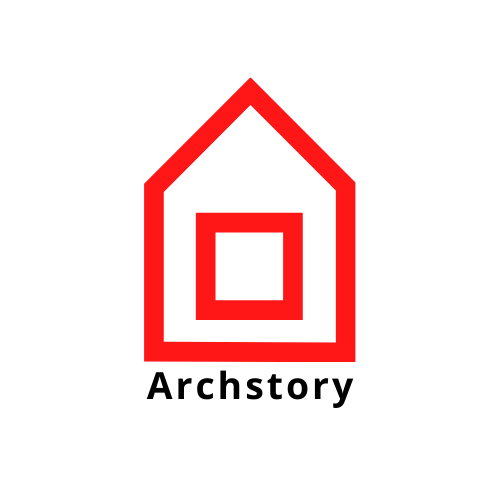
Urban Ark Architects-ION Cheongdam Commercial Building
'도시의 방주'는 건물들이 이목을 집중시키는 청담이라는 상황을 감안할 때 자체적으로 과도한 제스처를 취하면 주변에 또 다른 소음을 가중시킬 수 있다는 우려를 제기했다. 그래서 도시의 방주는 묵직한 캔버스가 묵묵히 서있다는 발상을 내세워 단순한 덩어리와 무게만으로 존재감을 드러내기로 했다. 일조량에 대한 법적 삿너으로 잘라야 했던 북쪽에서는 최대한 임대면적을 한도 내에서 최대한 확보해야 한다. 하지만 차질로 인해 뒷편에 있는 이웃 아파트들과의 사생활 보호를 위해 각 층 마다 다양한 베란다 버퍼를 계획했다.
1층에는 전면의 주차장을 제공하는 럽은 공터가 있으며, 지하로 개방된 코너의 함몰 공간으로 지상에서의 접근성을 높였다. 건물의 주출입구는 사람들이 쉽게 접근할 수 있도록 주요 사거리 방향으로 약간 회전되어있다.
In the block behind the glamorous Cheongdam luxury fashion street in Gangnam, Seoul, there are still four to five-storey old residential buildings built in the early 90s along with trendy restaurants, cafes, and entertainment agencies that fill the alleys. Cheongdam area is read as fragmentary eye-catching images rather than as the continuity of the physical spaces. ‘urban ark architects (urban ark)’ were commissioned a project to combine two plots, each with old low-storey housing and a beauty parlor.
Considering the context of Cheongdam, where buildings make every effort to attract attention, ‘urban ark' raised concerns that the project could add another noise to the area if it made excessive gestures on its own. So, on the contrary, the urban ark came up with an idea that a heavy canvas silently stands, and decided to reveal its presence only with the simple mass and its weight. In the north, which had to be cut down by the statutory slant line for the sunlight, the maximum rental area should be secured as much as possible within the limit. But thanks to the setback, various veranda buffers were planned on each floor in consideration of privacy with neighboring apartments at the rear. On the first floor, there is a large open space providing parking lots in front, and a sunken space at the corner open to the basement to increase accessibility from the ground level. The main entrance to the building is slightly turned toward the main crossroad so that people can easily find the access.
Externally, formative play or excessive expressions on the surface were restrained and the simple method of 'repetition' was applied. As for the overall volume, the individual floors became a single mass and the masses are floating on top of each other. And the horizontal strip windows are running in-between. Weight can be measured, but the heaviness is a relative concept. The tension created by the masses floating against gravity adds to the sense of heaviness itself. On the other hand, the strip windows provide a panoramic view that expands the indoor space and paradoxically maintains lightness.
Concrete long bricks were used for the exterior wall. Bricks are materials that express a sense of weight. In addition to the visual representation of lumps, you can feel the heaviness of thousands of bricks piled up to form lumps. Fashionable treatment using brick patterns to compose the exterior wall was avoided, and gradation of texture that changes density as it goes up was applied instead. Textures and shadows were handled using only the horizontality of the brick courses and joints elaborately, and the upper floors received the afternoon sunlight thanks to the brickwork with the invisible joints. Here, the upper seamless long brick part also had to be applied to the rear slope of the lump continuously to be read as a whole. It was a challenge to develop details for the rear slope as the concrete bricks with special frogs for the invisible joint are normally used for the vertical brickwork.
Bead-blasted stainless steel and perforated aluminum panels were applied to the exterior wall at the ground level and to the roof parapets respectively to avoid the banality easily seen in brick buildings. Especially the perforated parapets enhance the effect of the gradation.
Now, tenants will reinterpret the space and create their own space story as a 'place'.
Photography by Changmook Kim










from archdaily
'Commerce' 카테고리의 다른 글
| -센스 오브 더 씨 카페 [ JOHO Architecture ] Sense of the Sea Cafe (0) | 2022.08.05 |
|---|---|
| -앤트워프 지상주차장 [ HUB ] Park+Ride Antwerp (0) | 2022.07.16 |
| -시카고 애플스토어 [ Foster +Partners ] Apple Store Michigan Avenue, Chicago (0) | 2022.06.16 |
| -블루보틀 홍콩 [ Schemata Architects + Jo Nagasaka ] Blue Bottle Coffee Hong Kong Central Cafe (0) | 2022.06.14 |
| -프라이탁 제주 [ Schemata Architects + JoNagasaka ] FREITAG JEJU by MMMG (0) | 2022.06.09 |
